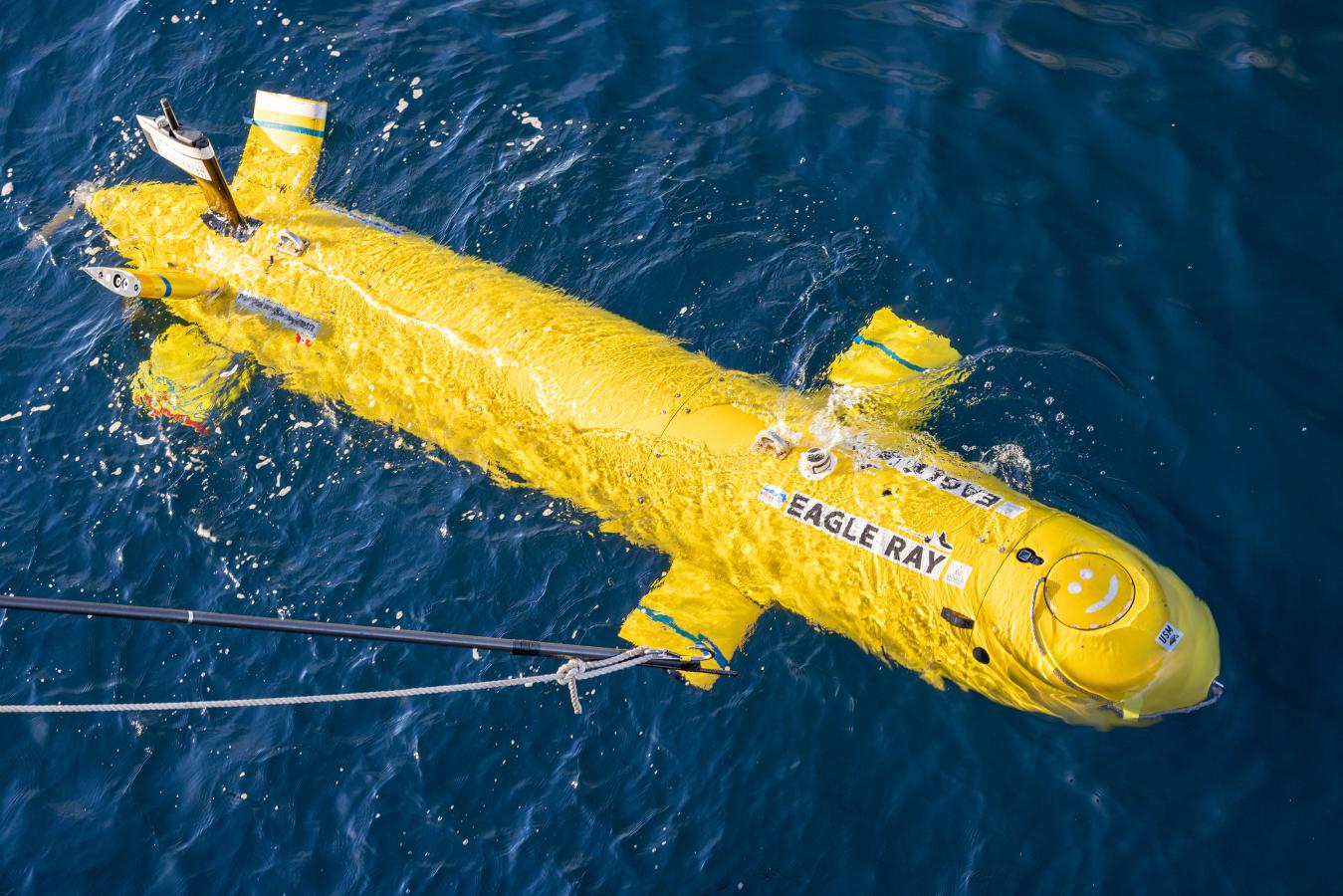Middle School | Daily Do
How does sonar work, and how can sonar create more complete and accurate maps of the seafloor?

Lesson Snapshot
Middle school students, as scientists, investigate physical science ideas to answer the driving question: How does sonar work, and how can sonar create more complete and accurate maps of the seafloor? Students begin by reading two cases involving incomplete or inaccurate seafloor maps and considering the problems this poses. Next, students evaluate information in several seafloor resources and identify a phenomenon: People are making maps of the seafloor using sonar, or sound. Students consider related phenomena and develop an initial model explaining how sonar works and how sonar can be used to create maps of the seafloor. Students discuss their models with a group and generate questions they can’t currently explain in their models. Students investigate their questions by noting patterns and running tests in a sound wave simulation and a paper model of seafloor mapping. Additionally, students evaluate scientific and technical information about sonar systems. Finally, students individually and collaboratively use patterns observed in graphs and the simulation, as well as scientific and technical information, to create a Class Consensus Model and a written explanation of the phenomenon.
This lesson plan was created in collaboration with the Johns Hopkins Wavelengths research public engagement program, the Johns Hopkins Office of Research, and Dr. James Bellingham based on his 2025 Wavelengths book, How Are Marine Robots Shaping Our Future?
Click the Download PDF button under the lesson title (at the top of the page) for the complete Lesson Plan.
Materials
Student Materials
Per Student
Per Small Group (2 to 4 students)
- N/A
Teacher Materials
- NOAA Educator Guide: Wet Maps
- Sample Class Consensus Model
Optional Teacher Resources






